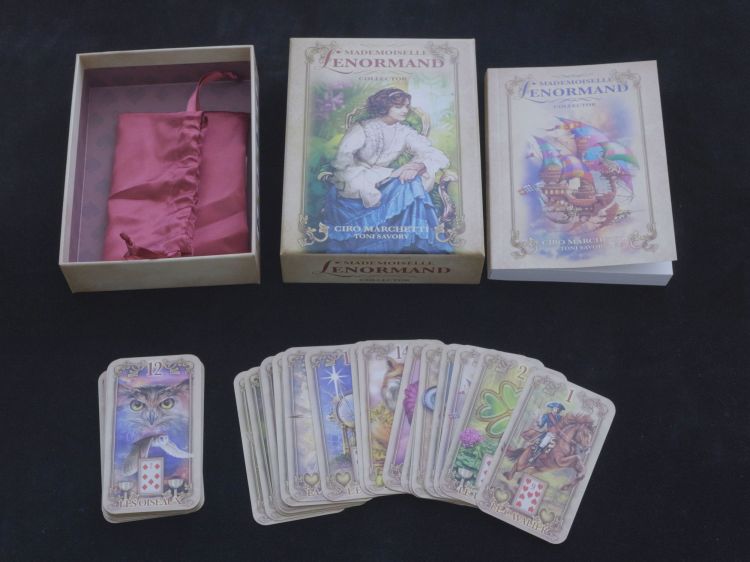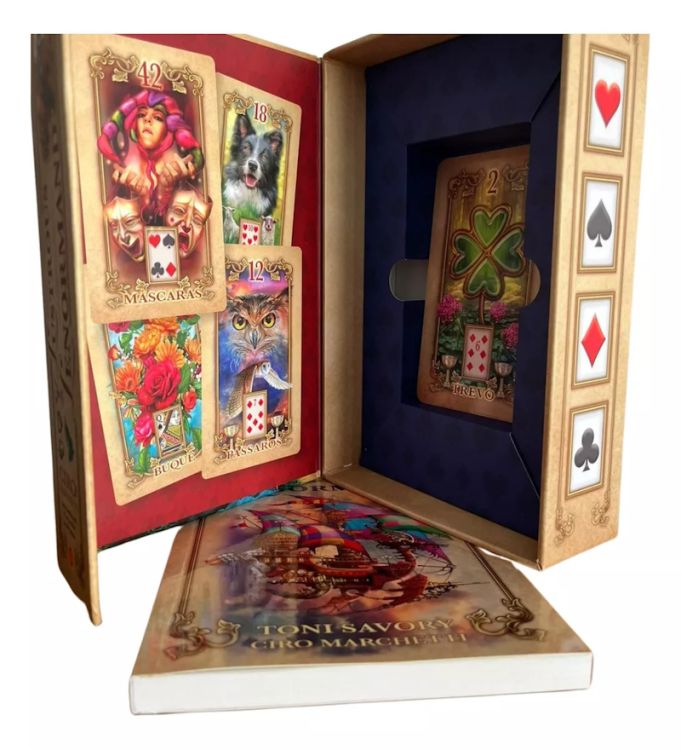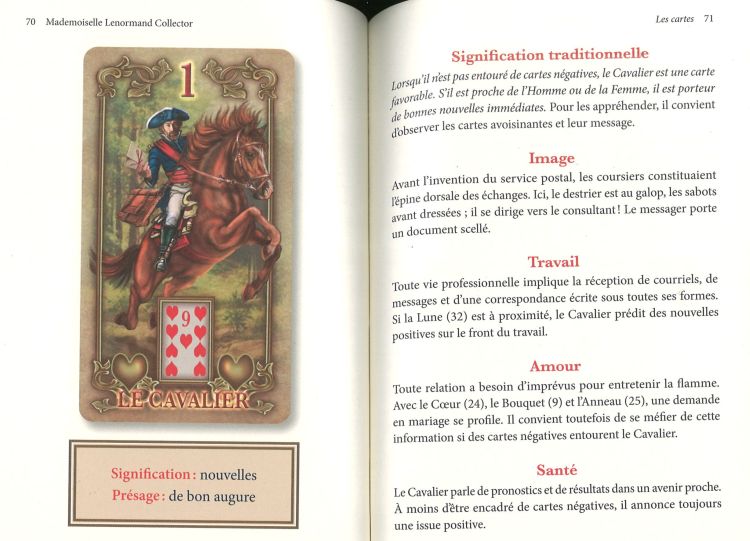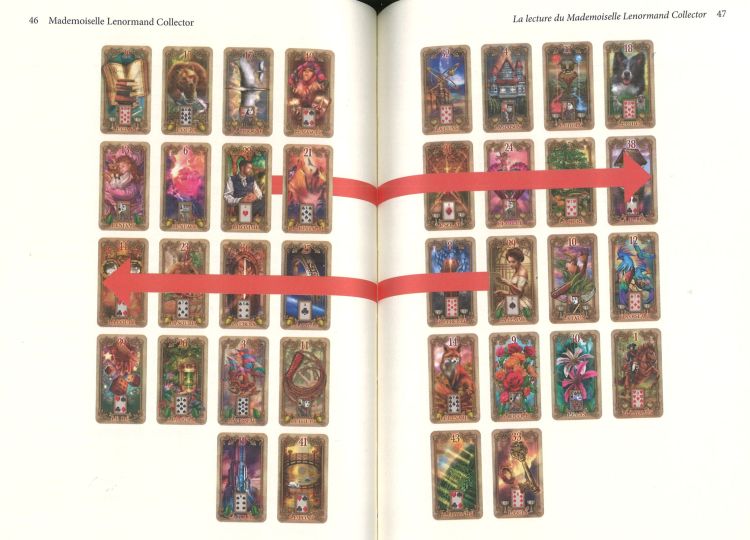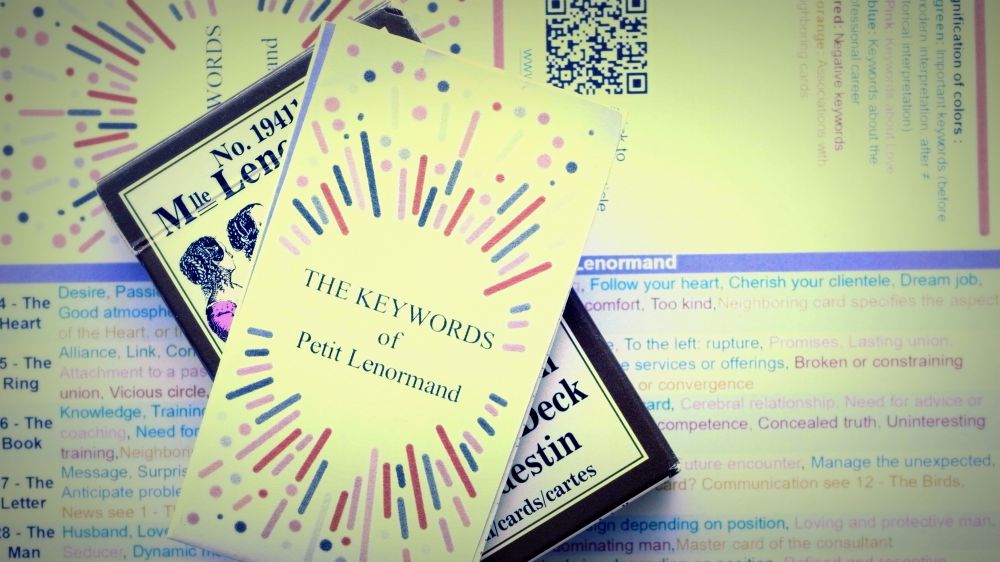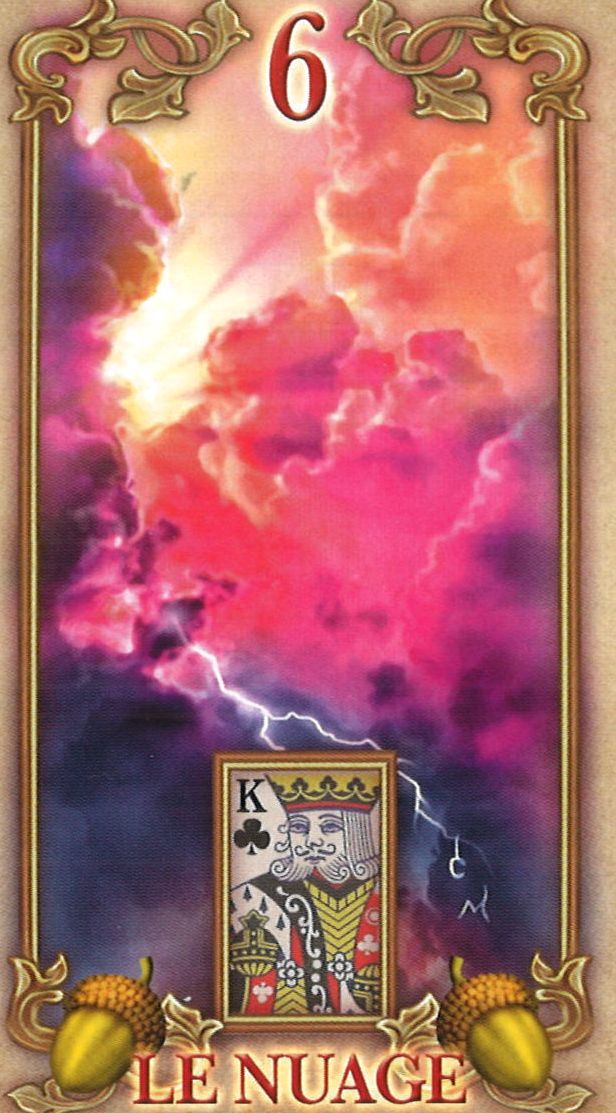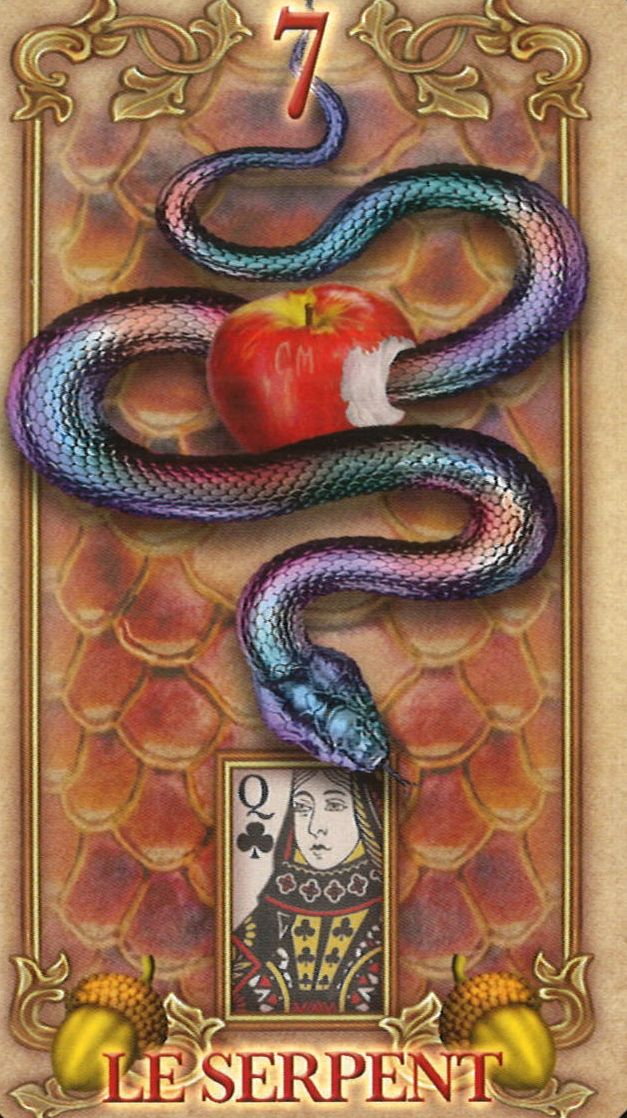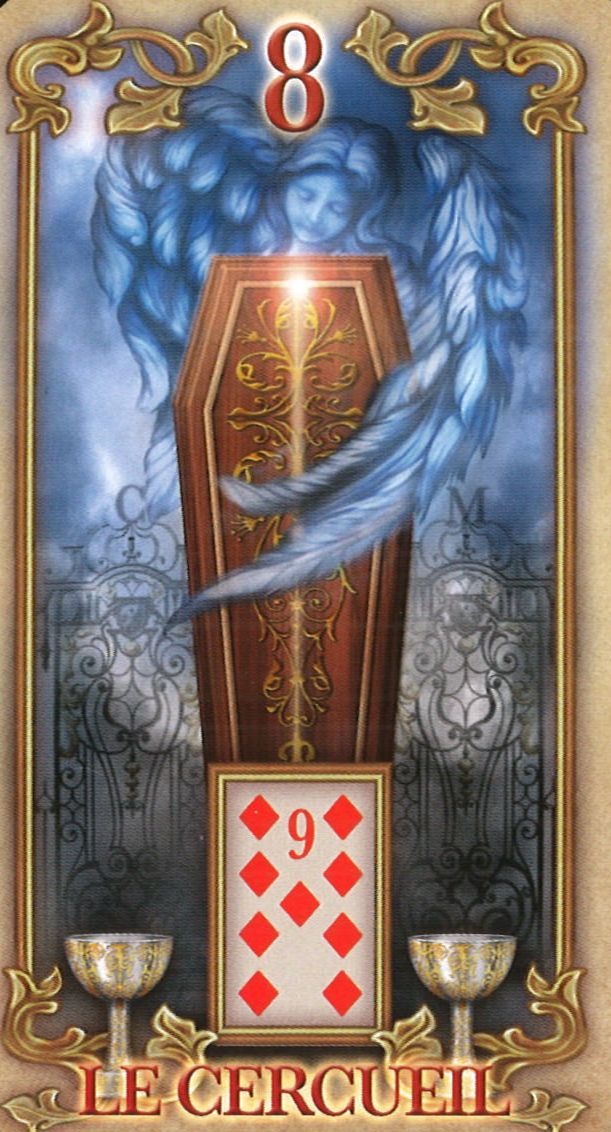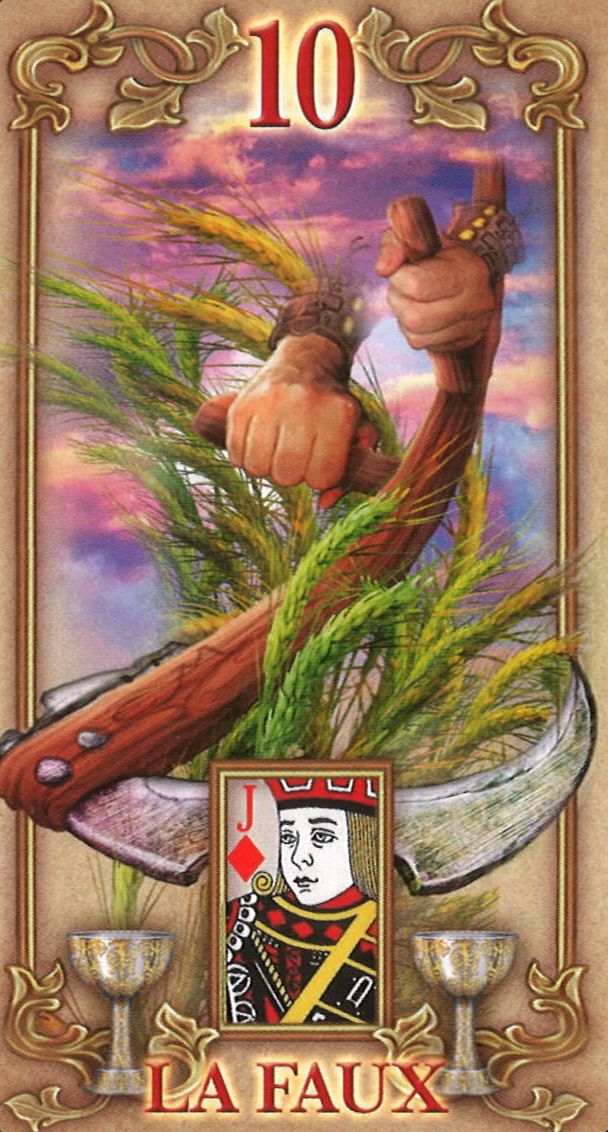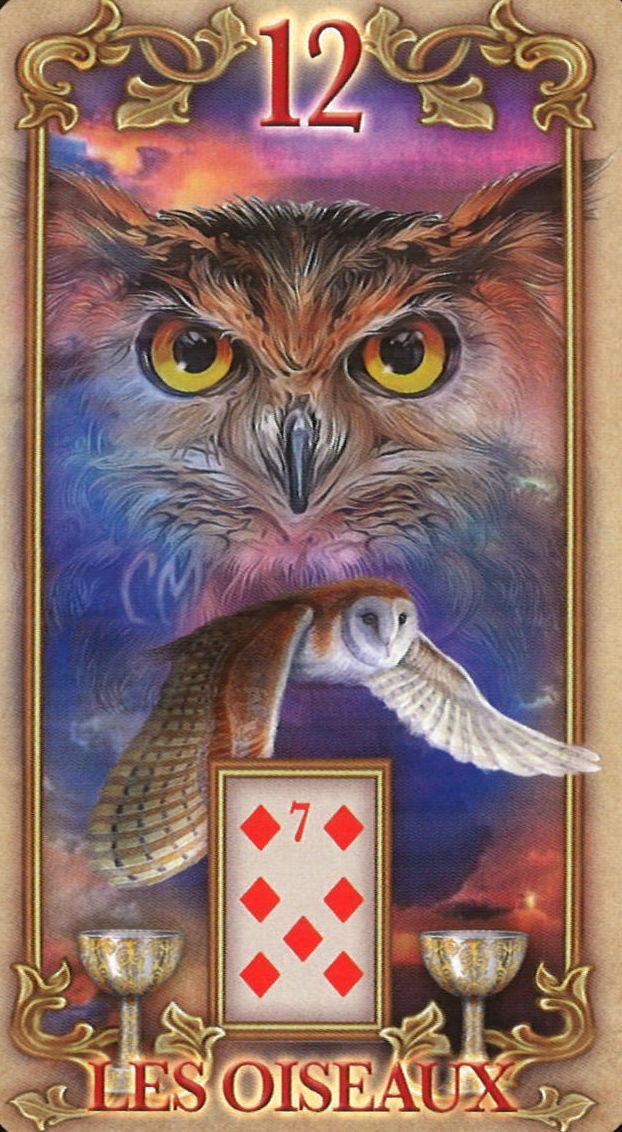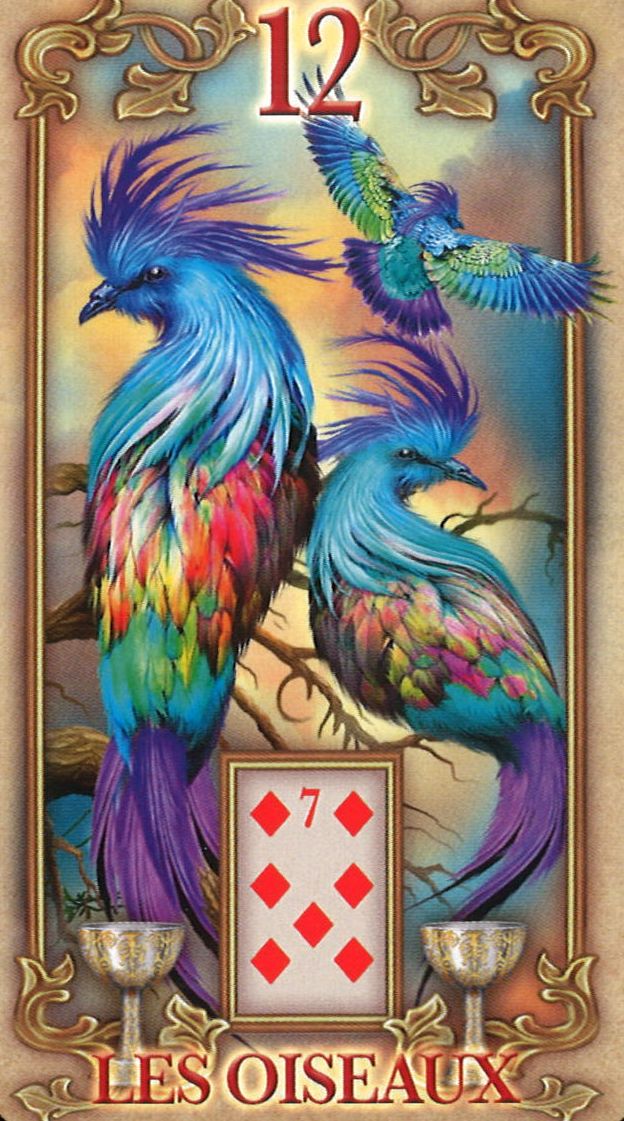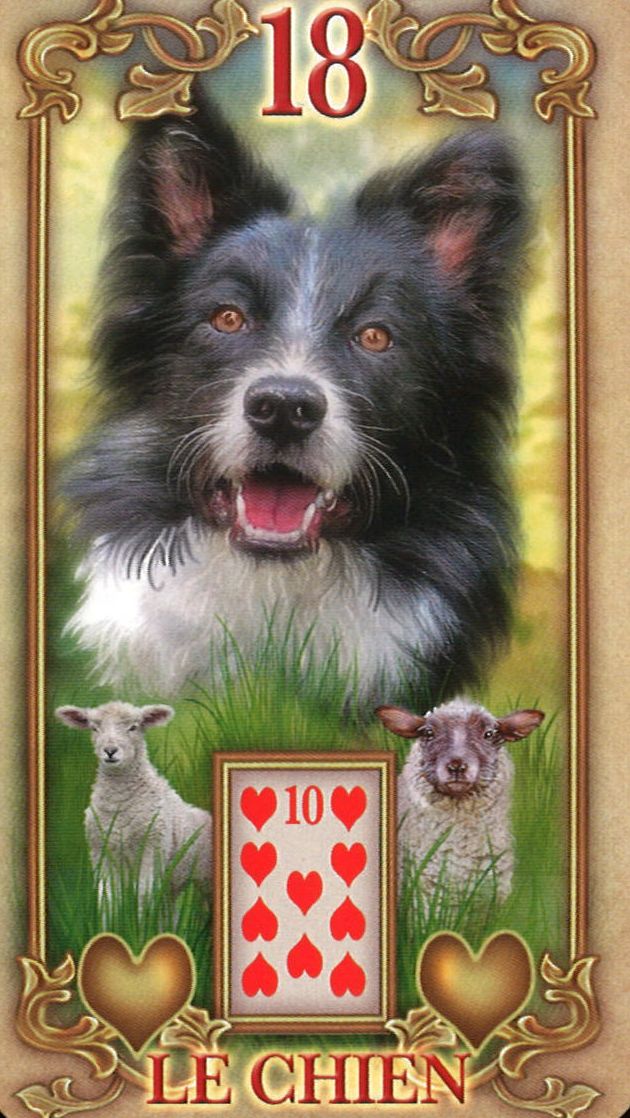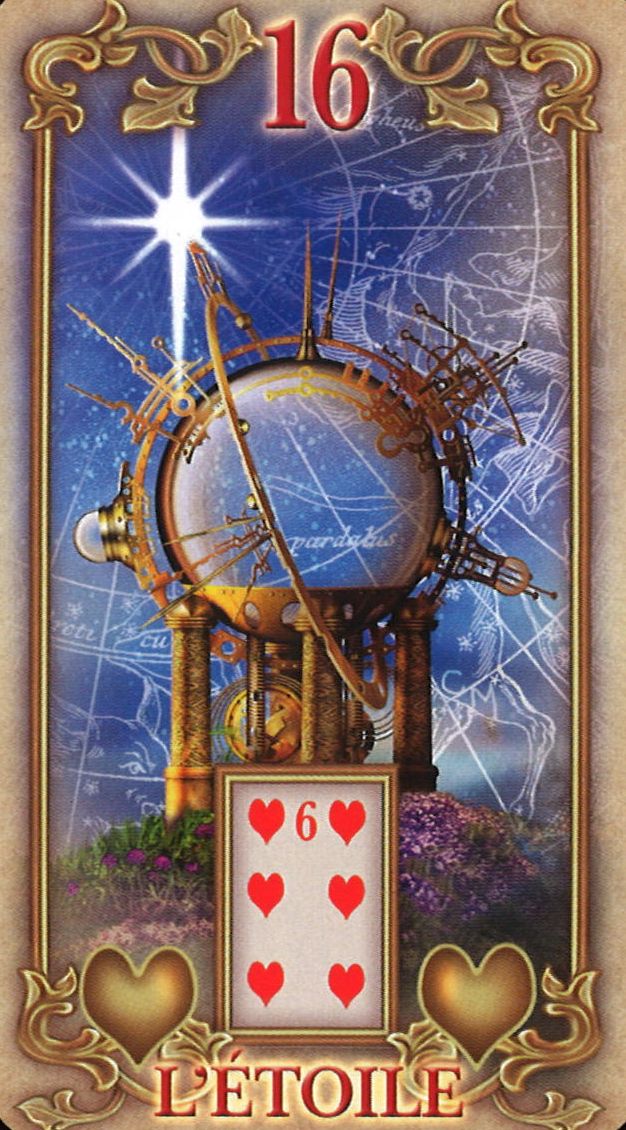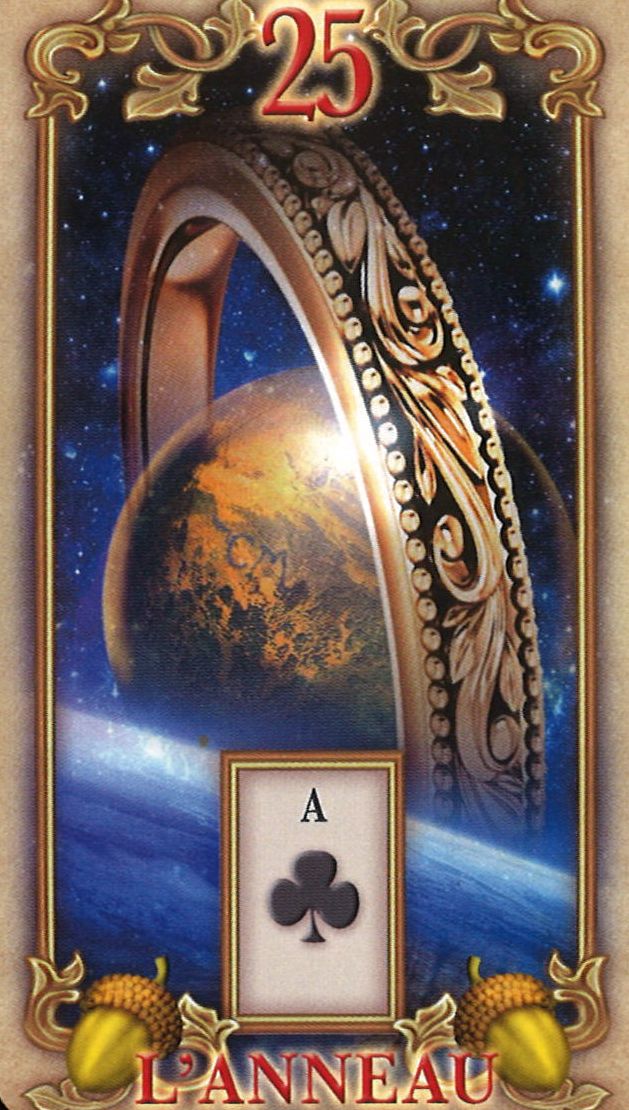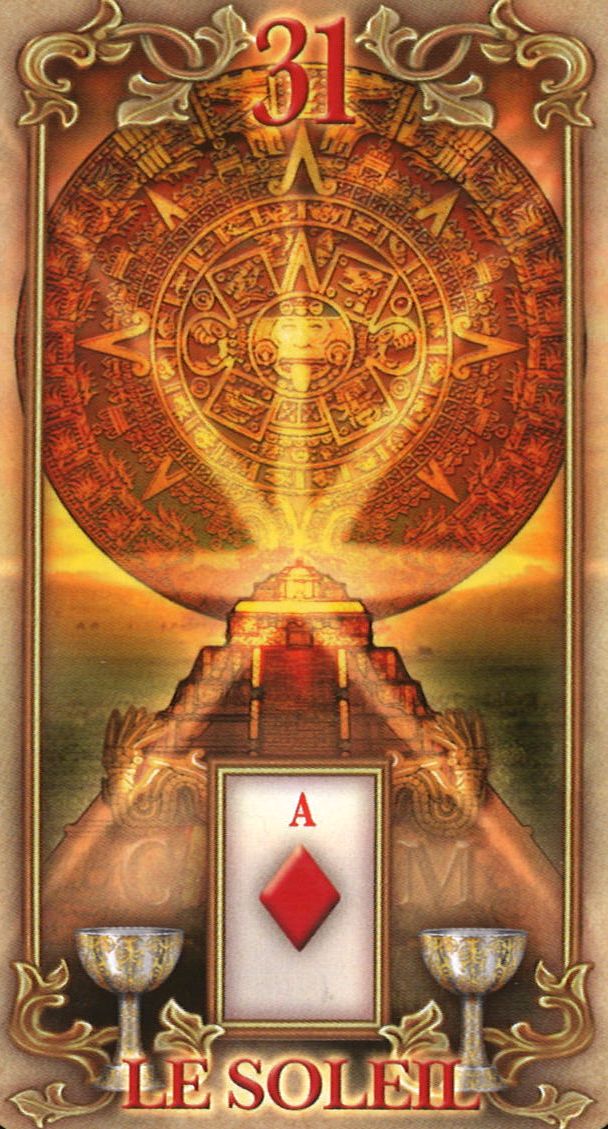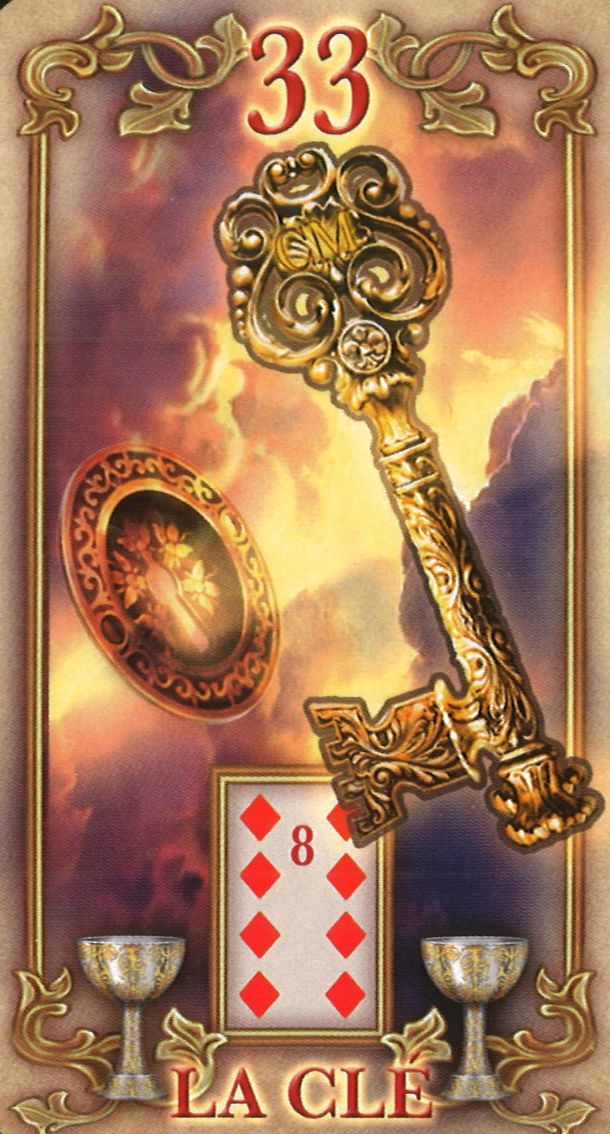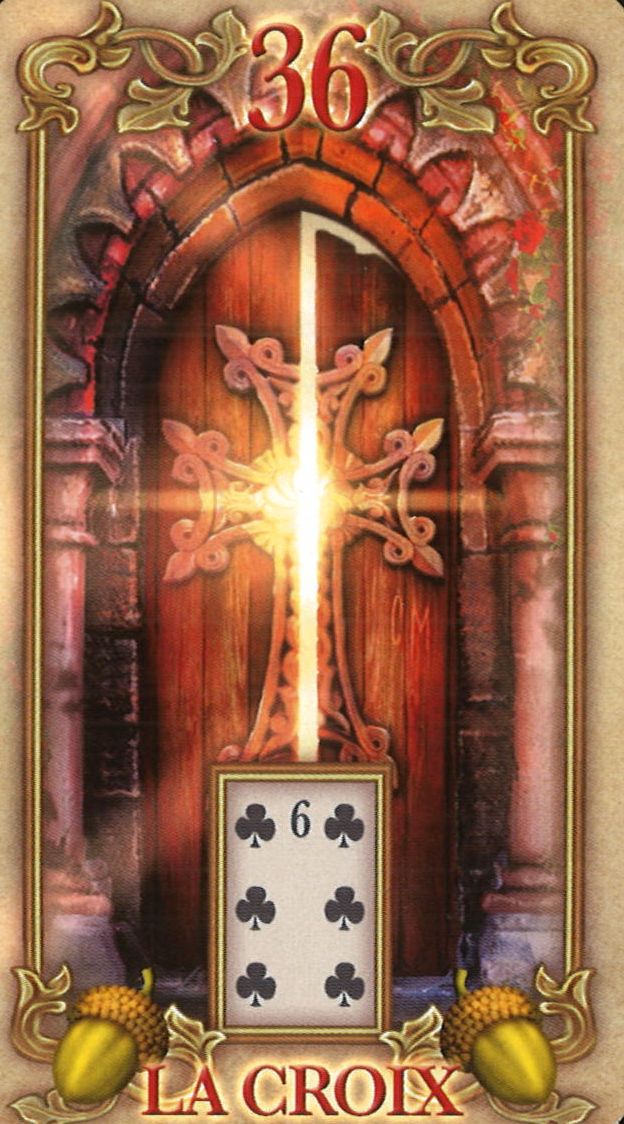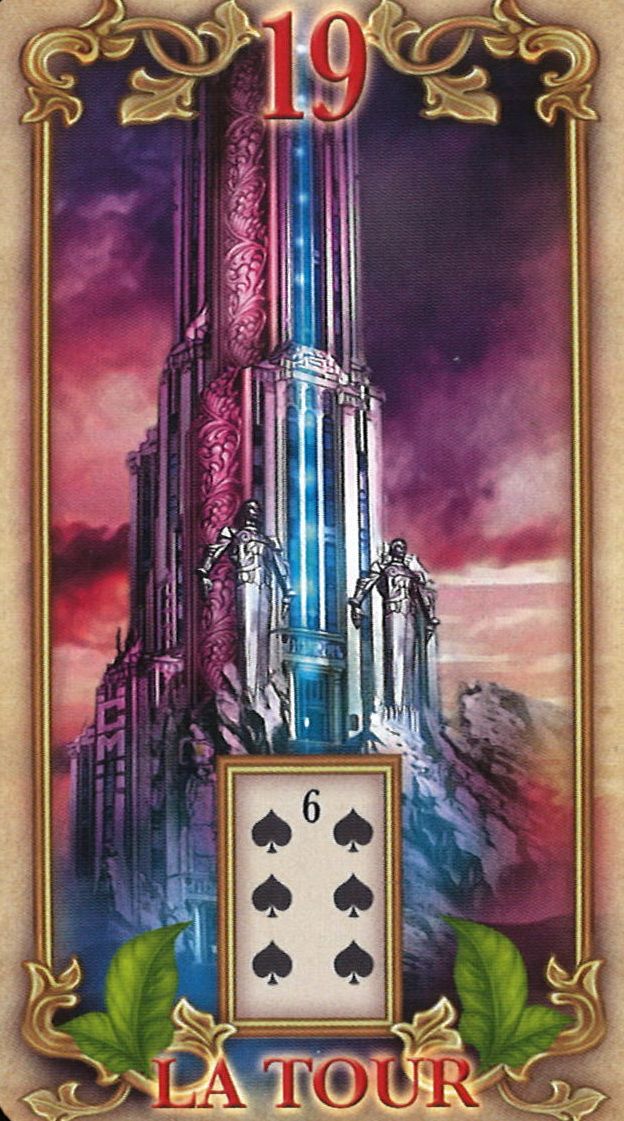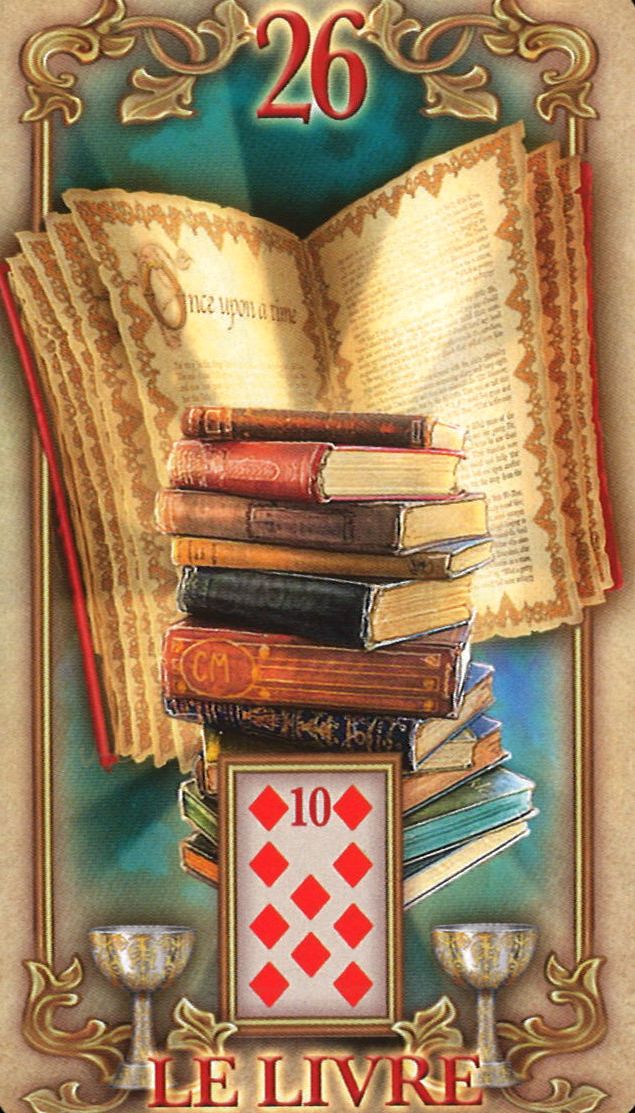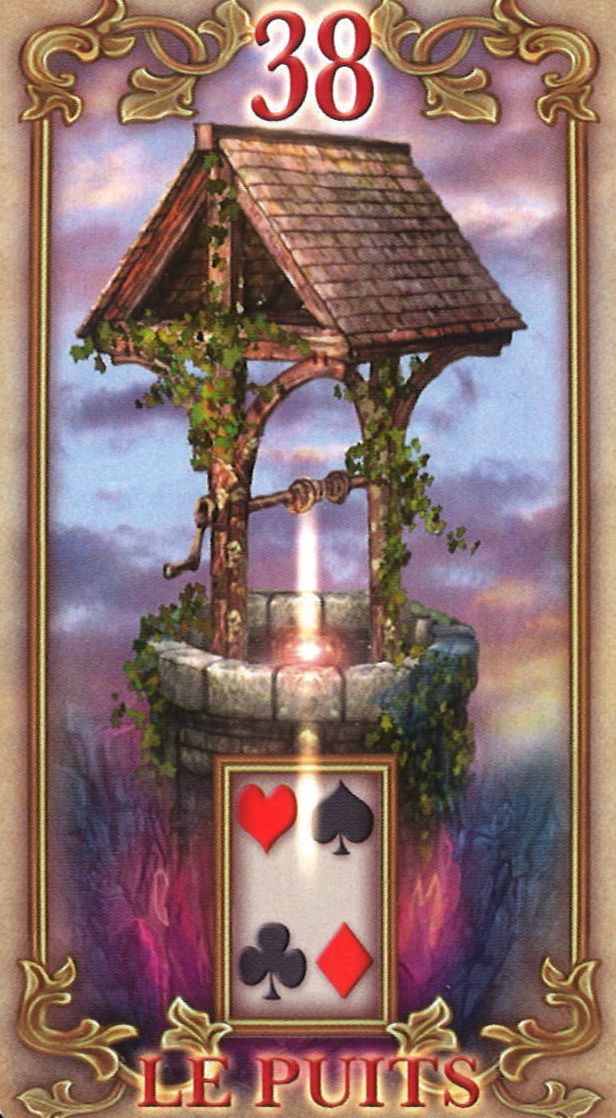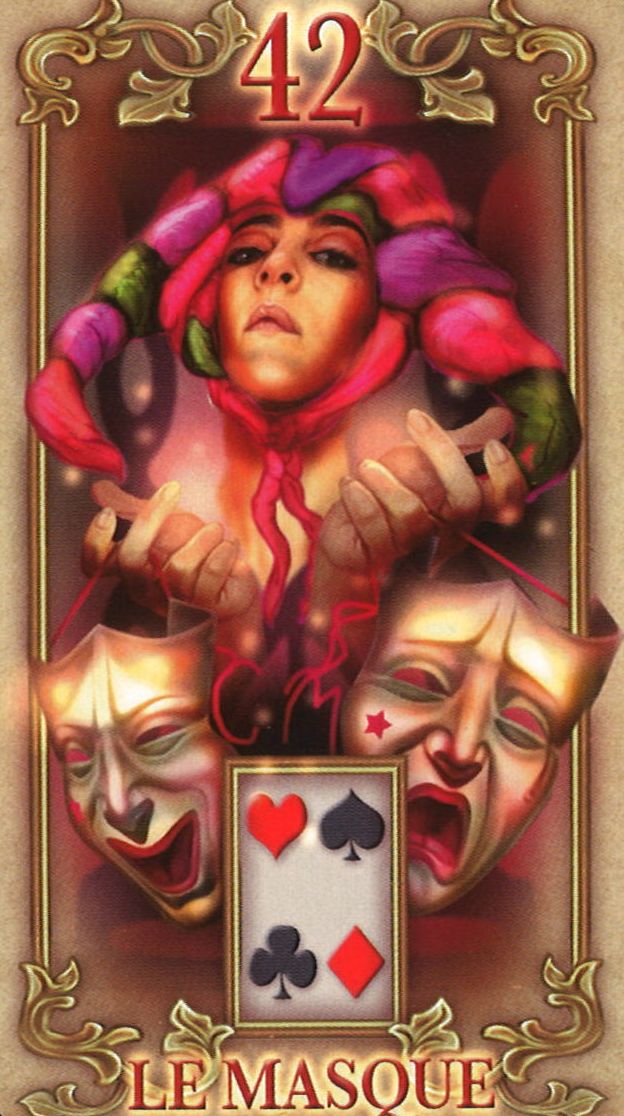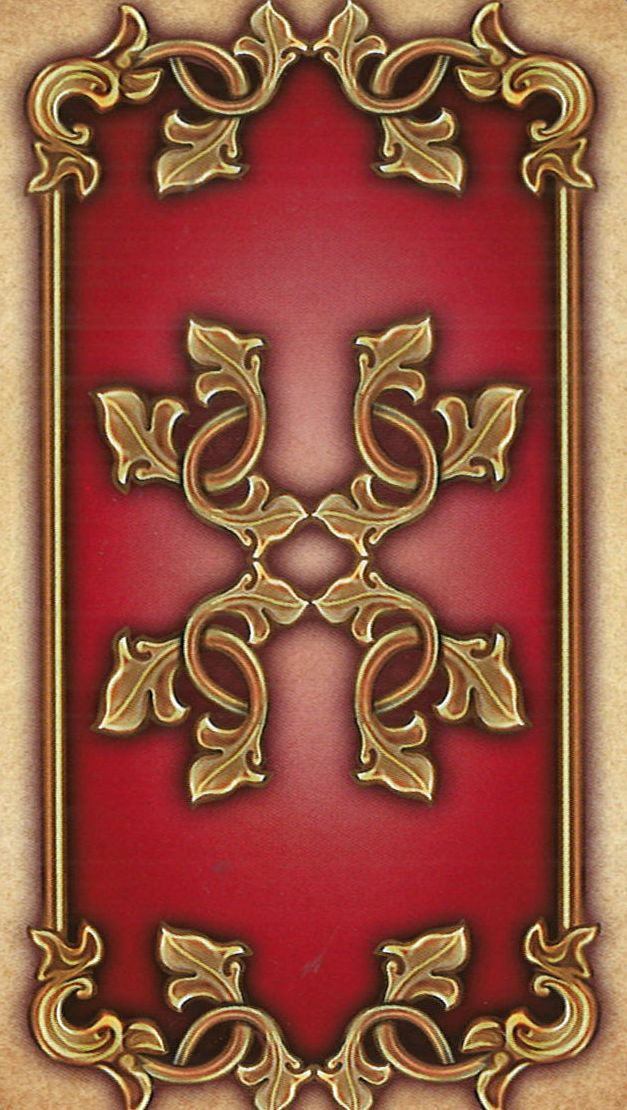I must say I'm overall disappointed with this deck, and for several reasons.
First, from a material standpoint, the cards are thick and don’t shuffle easily, making them hard to handle. Additionally, while the illustrations are undeniably beautiful and artistically well done, they suffer from an excess of detail that harms the readability of the images. When only a few cards are laid out, it remains manageable, but once working with the Grand Tableau of 36 cards, this visual overload becomes a major hindrance. The deck then becomes confusing and interpretation challenging, as it’s hard to distinguish each card at a glance.
In the end, while this deck may be a visual delight for aesthetic enthusiasts, I fear it quickly shows its limitations, especially for beginners who need a simple, clear deck to explore various interpretation levels freely.
I also notice a clear lack of communication between the illustrator, Ciro Marchetti, and the booklet author, Toni Savory. It appears that the author, when interpreting the images, didn’t fully grasp the spirit of the Petit Lenormand, leading to contradictions between text and illustrations, which is unfortunate for a deck of this quality.
In comparison to the Gilded Reverie Lenormand (review here), one of Ciro Marchetti’s other flagship decks, a notable difference emerges. The Lustrous cards are indeed smaller, which could ease the use of the Grand Tableau. However, the dimensions of the Gilded Reverie, while larger than standard poker size, remain more functional. Moreover, the Gilded Reverie succeeds in offering balanced, enriching illustrations for interpretation, whereas the Lustrous loses this balance with an excess of detail.
In conclusion, although one can understand Ciro Marchetti’s idea of offering a different Lenormand deck, perhaps in a more compliant format, it seems that this goal is only superficially achieved. The cards, while adopting a standard poker format (or nearly so), remain thick, sticky, and visually overloaded, making them cumbersome and unintuitive to use.
Learning the Petit Lenormand:
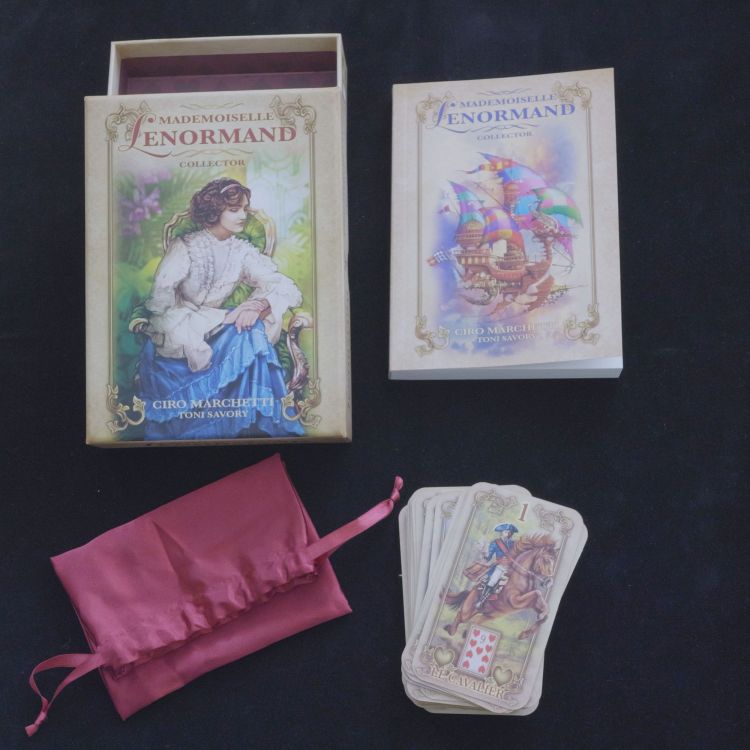
 Please note that this review is based on material and product in French. Depending on the edition you buy, the material could be identical, but also different on the packaging, the guidebook, the booklet, or the card stock . I'm sorry I can't systematically buy tarot cards and books in all editions (I don't receive gifts from publishers)! 😅
Please note that this review is based on material and product in French. Depending on the edition you buy, the material could be identical, but also different on the packaging, the guidebook, the booklet, or the card stock . I'm sorry I can't systematically buy tarot cards and books in all editions (I don't receive gifts from publishers)! 😅 